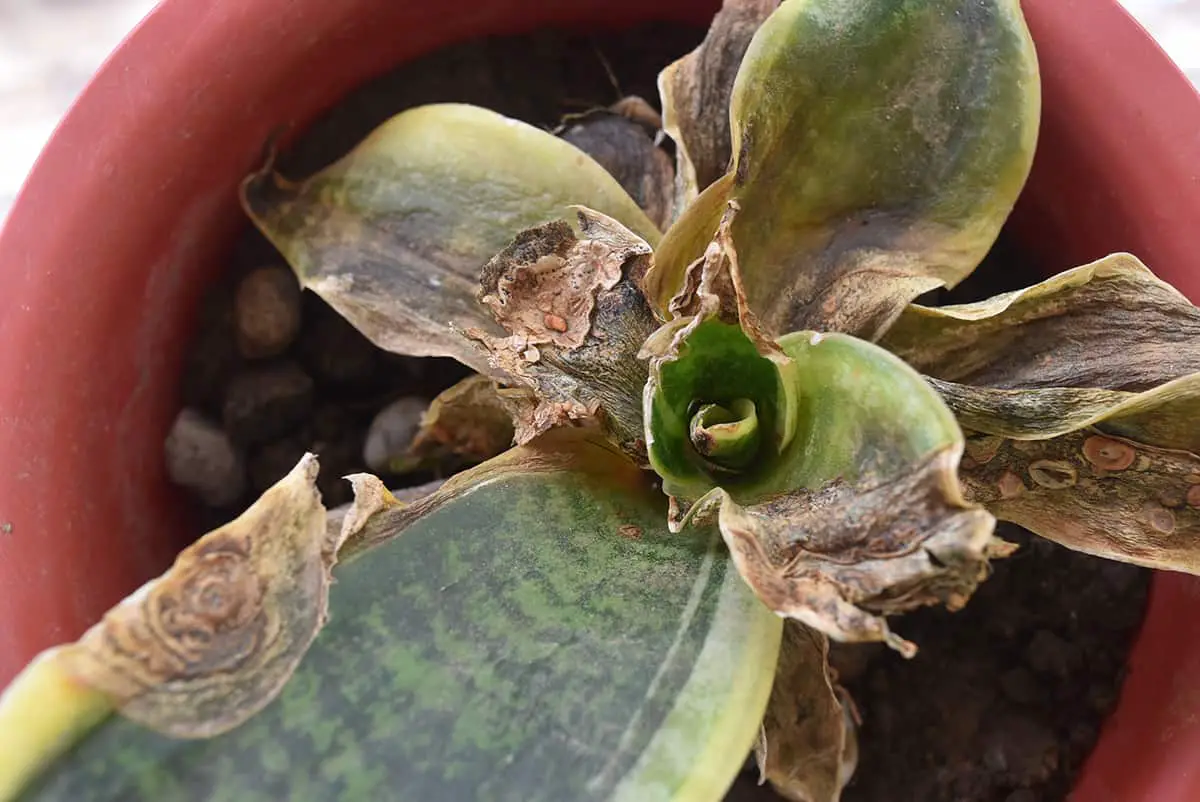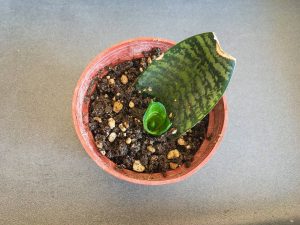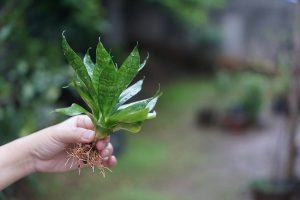Snake plants are renowned for being low-maintenance, easy-care plants that even the most inexperienced grower can keep alive; however, this does not mean that they are completely free of issues.
One of the most commonly reported problems among the various different types of snake plants is that the tips of the leaves have turned brown.
This is usually a sign that the plant is stressed in some way, and in most cases, once you have identified the problem, it will be simple to fix. Here we look at the possible causes for brown tips on snake plants and their fixes.
Table of Contents
What is Causing Brown Tips on my Snake Plant?
Potential Problem: Overwatering

By far, the most common cause of problems with snake plants is overwatering. Many people forget that snake plants are, in fact, succulents, so they need to be watered much less frequently than your other tropical plants such as philodendrons and monsteras.
If you have been overwatering your snake plant, then the soil will become waterlogged. This is an ideal environment for fungus to develop and thrive, and it results in root rot.
Once roots have succumbed to rot, they are no longer able to absorb moisture and nutrients, and as a result, the leaves will begin to die, starting with the tips of the foliage, which turns brown.
If you have been overwatering your snake plant, this is usually very easy to identify. Check the condition of your soil, and if it feels compacted, dense, and wet, then your snake plant has likely been getting too much water. One of the varieties of snake plants that are most vulnerable to overwatering is the Whale Fin Snake Plant.
Solution: Alter the watering technique
If your snake plant has suffered from root rot, then your plan of action will depend on how severe the rot is.
If the plant just has a few brown tips but looks fairly healthy overall, then the best thing to do is to simply let the soil dry out. If the soil is very waterlogged, you could encourage this by gently squeezing the pot so that excess moisture drips out through the drainage holes.
Wait for around two weeks until all of the soil has completely dried out before you water the plant again. You can do this by putting a finger inside the drainage holes to feel for dry or moist soil.
Once the soil is dry, water the plant thoroughly until it comes out of the drainage holes, and don’t repeat until the soil has once again dried out. This will prevent the root rot from escalating and help the snake plant to return to a fully healthy state.
If your snake plant is showing signs of severe distress along with brown tips, such as blistered foliage, limp leaves, or fully browned leaves, then it may be that the root rot has escalated to the point of no return. Remove your plant from its container and remove as much of the soil as possible.
You will be able to tell healthy roots from rotten roots because they will be firm and white. If there are a significant amount of healthy roots, remove the rotten roots and repot the plant in fresh, dry, well-draining soil. Remove any dead or damaged foliage.
Wait a few days before watering the plant, and then continue watering cautiously and less frequently than before. You should be able to save the plant, and it will regenerate itself. If the majority of the roots were rotten when you removed the soil, then the plant cannot be saved and should be disposed of.
Potential Problem: Sporadic watering
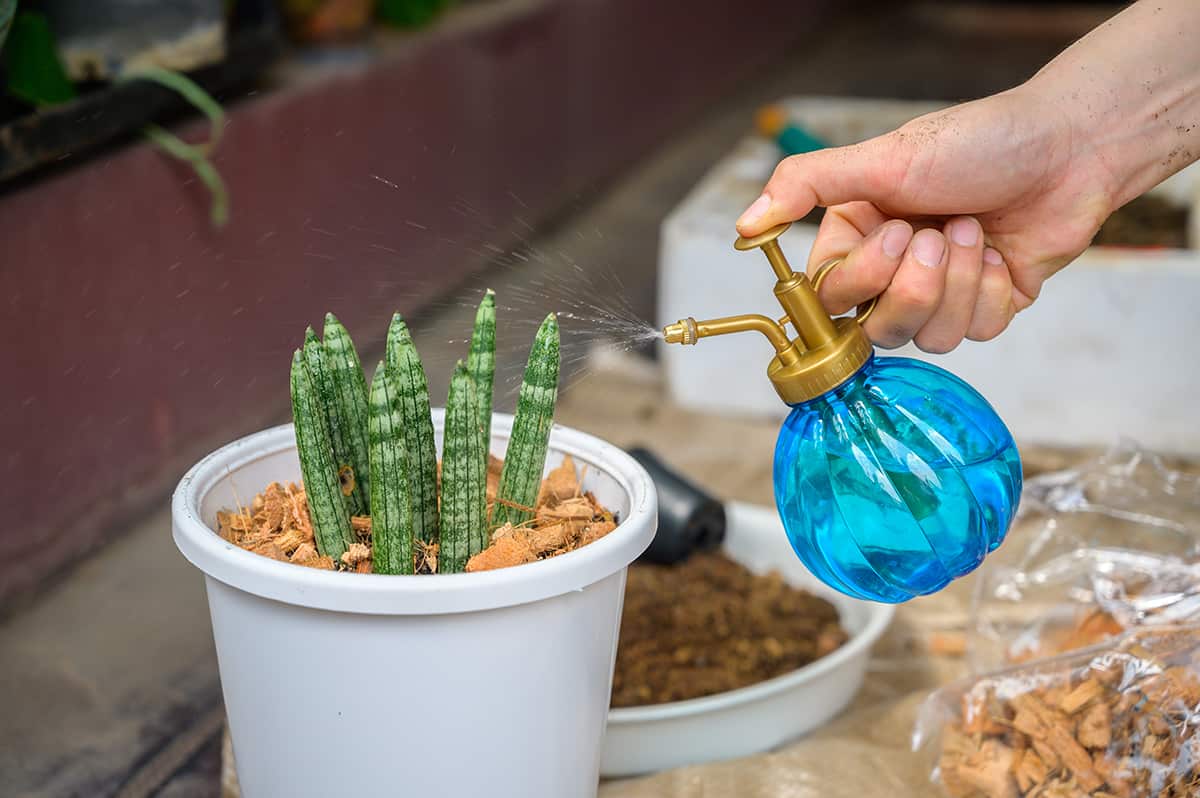
If you tend to water your snake plant inconsistently, then it can respond to this by turning the tips brown. Snake plants are very adaptable, and they will usually adapt to the level of care you give them within reason. If you typically allow your snake plant to go through periods of drought between each watering, then this is what the plant will come to expect.
If you suddenly start watering the plant heavily (maybe if you are worried you’ve been underwatering it and trying to overcompensate), then the plant will become stressed, which can cause brown tips.
Solution: Consistent watering
If your snake plant’s brown tips are a result of inconsistent watering, you can remedy this by watering it on a more predictable schedule. In general, you should be watering your snake plant between 3 and 4 times a month from May to September and only once or twice a month for the remainder of the year.
This schedule can vary according to the size of your plant, the climate, and the light exposure, so it is best to always check the soil condition and water the plant based on your findings. If the soil is dry, add water. If the soil is moist, don’t water it.
Potential Problem: Underwatering
Snake plants are relatively drought tolerant since they are succulents that store moisture in their fleshy leaves. However, if they go too long without being watered, the tips of the foliage will start to turn brown. This is because the moisture contained in the foliage is the plant’s backup source of water.
If it isn’t taking in any water from the roots, it will use its own foliage water supply. The first parts of the leaves to give up their water are the tips, hence why the tips will brown from under-watering before any other part of the plant. If the plant continues to receive no water around the roots, it will continue to diminish its own reserves, eventually turning all of the leaves brown.
Solution: Water more frequently
If you suspect that you have been underwatering your snake plant, you will find that the soil is very dry and crumbly, and in some cases, it will become quite hard and difficult to penetrate. If this is the case, use a chopstick or pencil to prod the soil in an attempt to break it up a little and aerate it.
Fortunately, if only the tips of the plant have turned brown, this is an easy problem to solve. You need to water the plant thoroughly and continue to water it as soon as the soil has dried out.
Potential Problem: Too much light
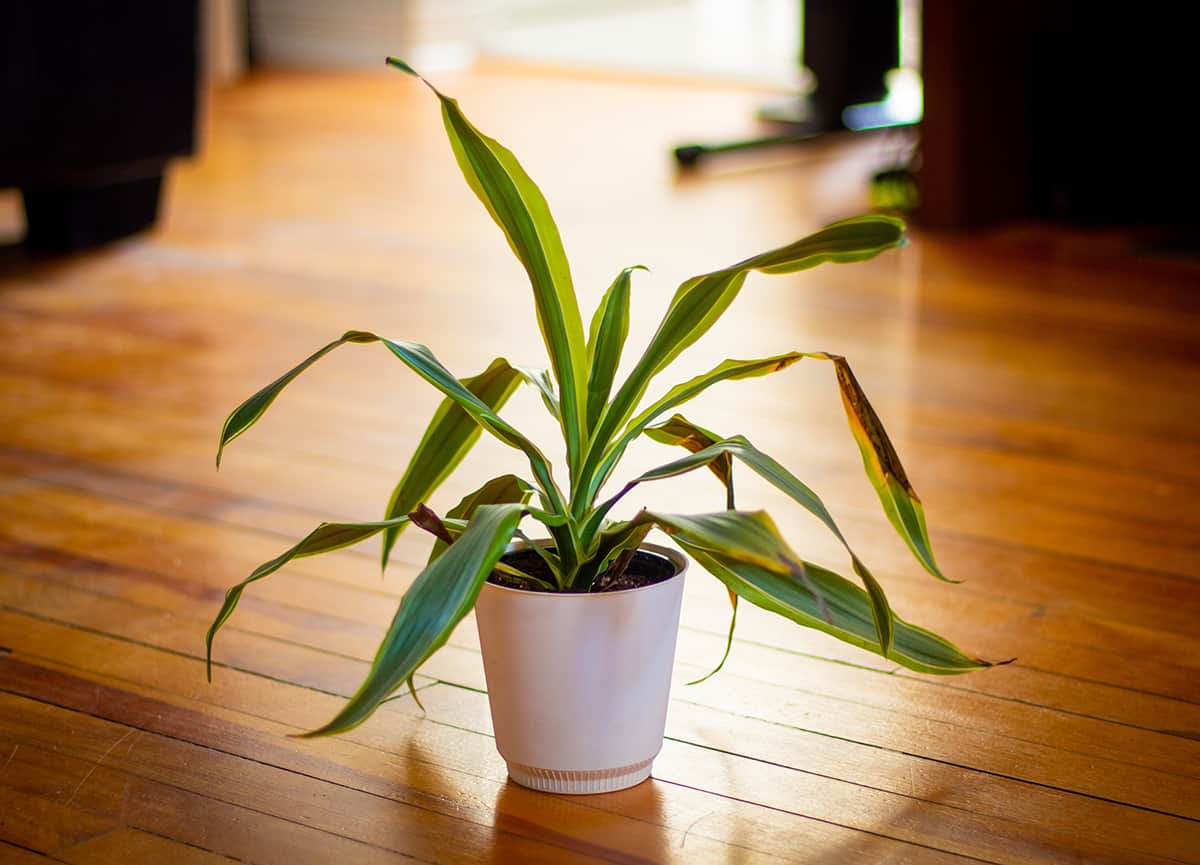
Snake plants are very adaptable in terms of light, and many varieties can tolerate full shade, such as the Sansevieria gracilis. They can also tolerate direct bright light; however, what they can struggle with is sudden exposure to too much light.
If your snake plant has been kept in the dark corner and you move it to a bright south-facing windowsill, it can go into shock, which will result in brown tips.
Solution: Move the plant
The solution to the problem of sudden intense light is, of course, to move the plant back to its previous spot where it was happy and healthy. If you want to move it to a better-lit position, you should do so gradually.
You can do this by exposing it to an hour of direct sunlight each day for a week before increasing the daily exposure until it is ready to be moved to its new position permanently.
Potential Problem: Fertilizer burn
Snake plants do not need to be fertilized. They are accustomed to surviving on a very limited amount of nutrients in their natural habitats, however, many houseplant owners like to fertilize their snake plants to encourage them to grow faster. This, in theory, isn’t a problem until it is.
Brown tips can be caused by fertilizer burn, which essentially means your snake plant has more nutrients than it can handle. This could be a problem if you are guilty of using a strongly concentrated fertilizer or if you fertilize more than once a month.
Solution: Fertilize less
To resolve this issue, dilute the fertilizer you are using to half-strength or cease feeding the plant altogether.
Potential Problem: Low temperature
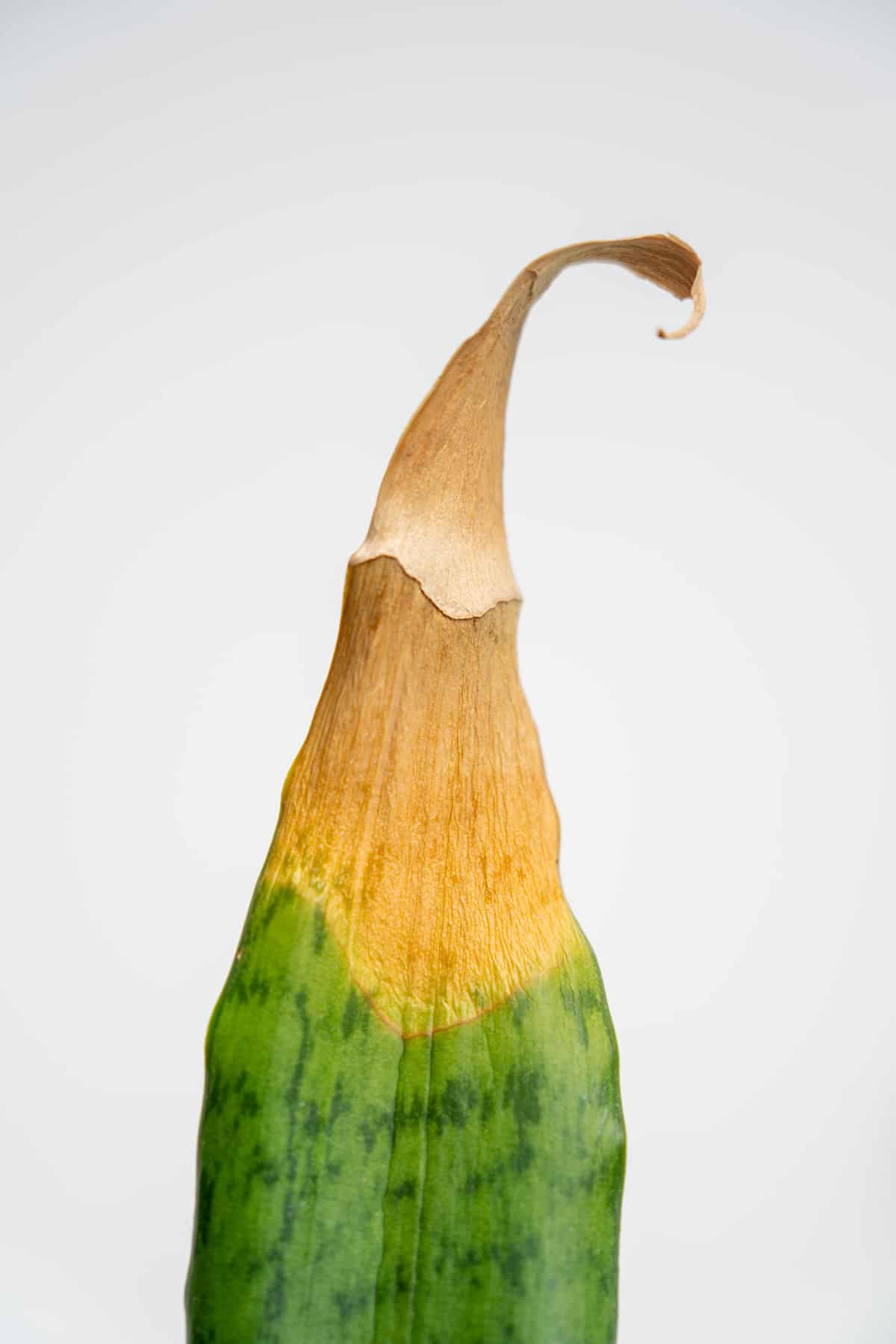
Most snake plants need to be kept in temperatures consistently between 60°F and 85°F. However, they can tolerate temperatures as low as 50°F for short periods. If your plant has recently been subjected to a cold spell, this could be the cause of brown tips.
Solution: Keep warm
You can’t reverse the effects of the stress your snake plant incurred through enduring cold temperatures, but as long as you move it to a warmer area quickly, it will recover.
If your snake plant has been near an open window, move it away from cold draughts, or if it has been kept outside, bring it inside as soon as the weather starts to consistently drop below 55°F
